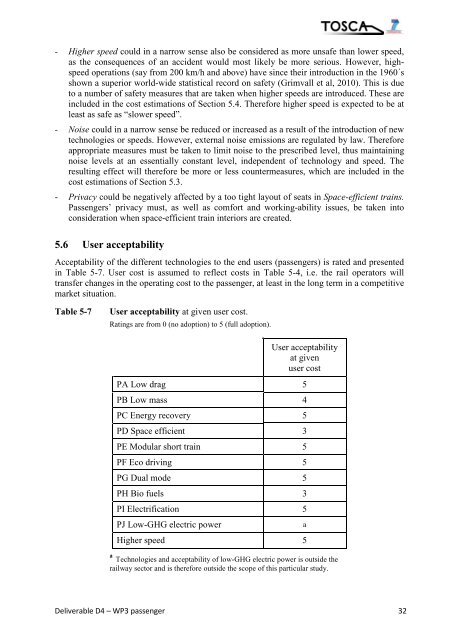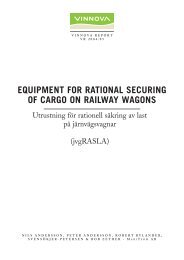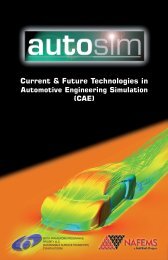WP3: Rail Passenger Transport - TOSCA Project
WP3: Rail Passenger Transport - TOSCA Project
WP3: Rail Passenger Transport - TOSCA Project
Create successful ePaper yourself
Turn your PDF publications into a flip-book with our unique Google optimized e-Paper software.
- Higher speed could in a narrow sense also be considered as more unsafe than lower speed,<br />
as the consequences of an accident would most likely be more serious. However, highspeed<br />
operations (say from 200 km/h and above) have since their introduction in the 1960´s<br />
shown a superior world-wide statistical record on safety (Grimvall et al, 2010). This is due<br />
to a number of safety measures that are taken when higher speeds are introduced. These are<br />
included in the cost estimations of Section 5.4. Therefore higher speed is expected to be at<br />
least as safe as “slower speed”.<br />
- Noise could in a narrow sense be reduced or increased as a result of the introduction of new<br />
technologies or speeds. However, external noise emissions are regulated by law. Therefore<br />
appropriate measures must be taken to limit noise to the prescribed level, thus maintaining<br />
noise levels at an essentially constant level, independent of technology and speed. The<br />
resulting effect will therefore be more or less countermeasures, which are included in the<br />
cost estimations of Section 5.3.<br />
- Privacy could be negatively affected by a too tight layout of seats in Space-efficient trains.<br />
<strong>Passenger</strong>s’ privacy must, as well as comfort and working-ability issues, be taken into<br />
consideration when space-efficient train interiors are created.<br />
5.6 User acceptability<br />
Acceptability of the different technologies to the end users (passengers) is rated and presented<br />
in Table 5-7. User cost is assumed to reflect costs in Table 5-4, i.e. the rail operators will<br />
transfer changes in the operating cost to the passenger, at least in the long term in a competitive<br />
market situation.<br />
Table 5-7<br />
User acceptability at given user cost.<br />
Ratings are from 0 (no adoption) to 5 (full adoption).<br />
User acceptability<br />
at given<br />
user cost<br />
PA Low drag 5<br />
PB Low mass 4<br />
PC Energy recovery 5<br />
PD Space efficient 3<br />
PE Modular short train 5<br />
PF Eco driving 5<br />
PG Dual mode 5<br />
PH Bio fuels 3<br />
PI Electrification 5<br />
PJ Low-GHG electric power<br />
Higher speed 5<br />
a Technologies and acceptability of low-GHG electric power is outside the<br />
railway sector and is therefore outside the scope of this particular study.<br />
a<br />
Deliverable D4 – <strong>WP3</strong> passenger 32
















